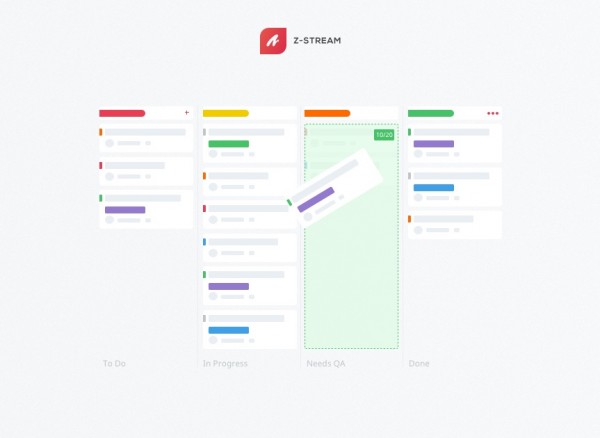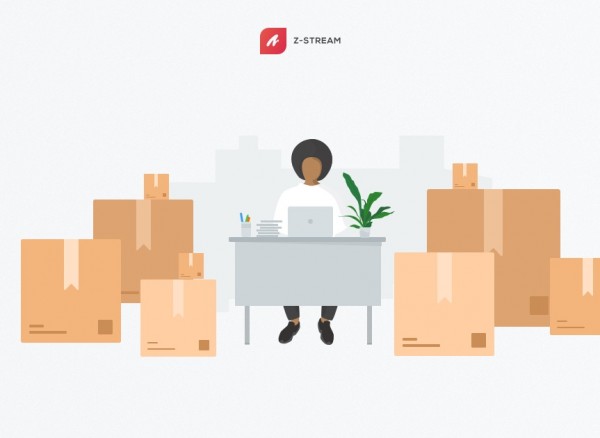
The responsibilities of a project manager, program manager, and product manager are often confused due to their frequent overlap. Let’s explore the differences between each role, understand where they overlap, and learn how they should collaborate to create successful programs, projects, and products.
What Exactly is a Program and what is a Project?
Put simply, a program is comprised of multiple projects, and sometimes multiple programs. A project is singular and well defined.
There is often resource overlap between projects and programs and members of a program team and project team often collaborate fairly closely. Furthermore, projects may deal with one or more products. Each of these is structured similarly, with a defined timeframe, deliverables, and budget.
A program is an umbrella initiative closely aligned with the company’s strategic initiatives. For example, in an IT department, a program could be something like a multi-year process to improve collaborative communication and file sharing within the organization. That program could spawn multiple projects. These projects could include rolling out a new document management system, implementing a new messenger platform—such as Slack—and selecting a new VoiP system that integrates with Slack.
A product, in terms of IT, will fall under one of two categories, the first being an external solution, such as the VoiP system or Slack. The second category would be developing an internal solution like an intranet site.
To further demonstrate with a real-world example, Microsoft would have a program manager for Windows 10. Under that program manager, multiple project managers working would be working on projects such as UX, security, efficiency, or memory utilization. The final product would still be Windows 10 itself. In this scenario the product is the program, however, the program is the broader level of tasks and efforts related to the final product.
The Difference Between Program Manager, Project Manager, and Product Manager
Based on the differences between а program, а project, and a product, the differences between program managers, project managers, and product managers become more clear. Program managers have an overview of the bigger picture, project managers are focused on achieving the project’s results with their allocated resources, and product managers are responsible for delivering the end product.

These individuals will likely collaborate frequently and might see overlap in their responsibilities, but there are specific focuses and priorities related to each role.
What Does a Program Manager Do?
Program managers are responsible for managing multiple projects. Additionally, they may occasionally manage multiple programs. Due to their broader responsibilities, they typically work within macro tools and coordinate projects.
What Are the Responsibilities of a Program Manager? A program manager is responsible for driving positive program outcomes. To achieve these, they must manage the lifecycle of the program, measure milestones across multiple projects and programs, create and uphold a budget, handle risks and complications that surface, as well as course-correct. Finally (and most importantly) they must ensure the proper coordination of deliverables and alignment of resources across both projects and programs.
To fulfill these responsibilities program managers should have a specific skill set, including:
- Strong project management experience
- Extensive knowledge of project and program management methodologies
- The ability to work well with a diverse range of personalities
- Leadership and management experience
- Familiarity with resource allocation and budgeting
What Does a Project Manager Do?
Under a program manager, a project manager has their own responsibilities. They manage the individuals executing a project as well as the project’s scope, schedule, and resources.
Since a project manager’s scope is smaller than that of a program manager, they focus more on project-specific details to drive positive outcomes. Further, project managers assemble the project team, oversee their performance, and collaborate with the product manager(s).
To achieve these outcomes, projects managers’ skill sets should include:
- Leadership and management experience
- Excellent negotiation skills
- Expertise in project scheduling
- Risk management
- Critical thinking
According to Greg Cimmarrusti, ERP Project Manager at Infor, “Being a project manager is like being an artist, you have different colored process streams combining into a work of art.” As a project manager, you bring together separate resources across different departments to accomplish an end-result, aligned with the organization’s strategic initiatives.
What Does a Product Manager Do?
Under a program manager, under a project manager, a product manager is responsible for delivering a singular end product. They manage the team delivering the end product.
The responsibilities of a product manager include leading their team to successful delivery of the end product; interfacing with a project manager, product team, sales team, and customers; managing the product lifecycle; managing product marketing communications, and defining a product vision in order to maximize a product’s value for customers.
According to Deep Nishar, the VP of Product at LinkedIn, “A great product manager has the brain of an engineer, the heart of a designer, and the speech of a diplomat.” The skills of a good product manager include:
- The ability to run efficient meetings
- Customer service experience
- Leadership and interpersonal skills
- Effective communication skills
- Strong time management skills
Recently, more and more IT companies also have a change manager that deals with preparing the end users for the new product, communicating differences, and helping overcome difficulties related to rolling out new products. Change managers are important because some products, projects, and programs are so complex that you have to prepare the company or customers in order to actually use the product once it’s released.
There are distinct differences between projects, programs, products, and their respective managers. An easy way to understand their scope overlap is to look at the program as the big picture initiative, with multiple projects, and possibly programs, underneath it, with multiple products underneath those projects.
Z-Stream is useful for project managers, program managers, and product managers alike. You can easily plan, visualize, control, and manage all your tasks within Z-Stream. With features such as Roadmaps, Release notes, Timesheets, and customizable agile boards, it’s incredibly simple and convenient to keep track of progress and achieve your goals.
Sign up for a free trial today and see exactly how Z-Stream can help you work in a more efficient way.



